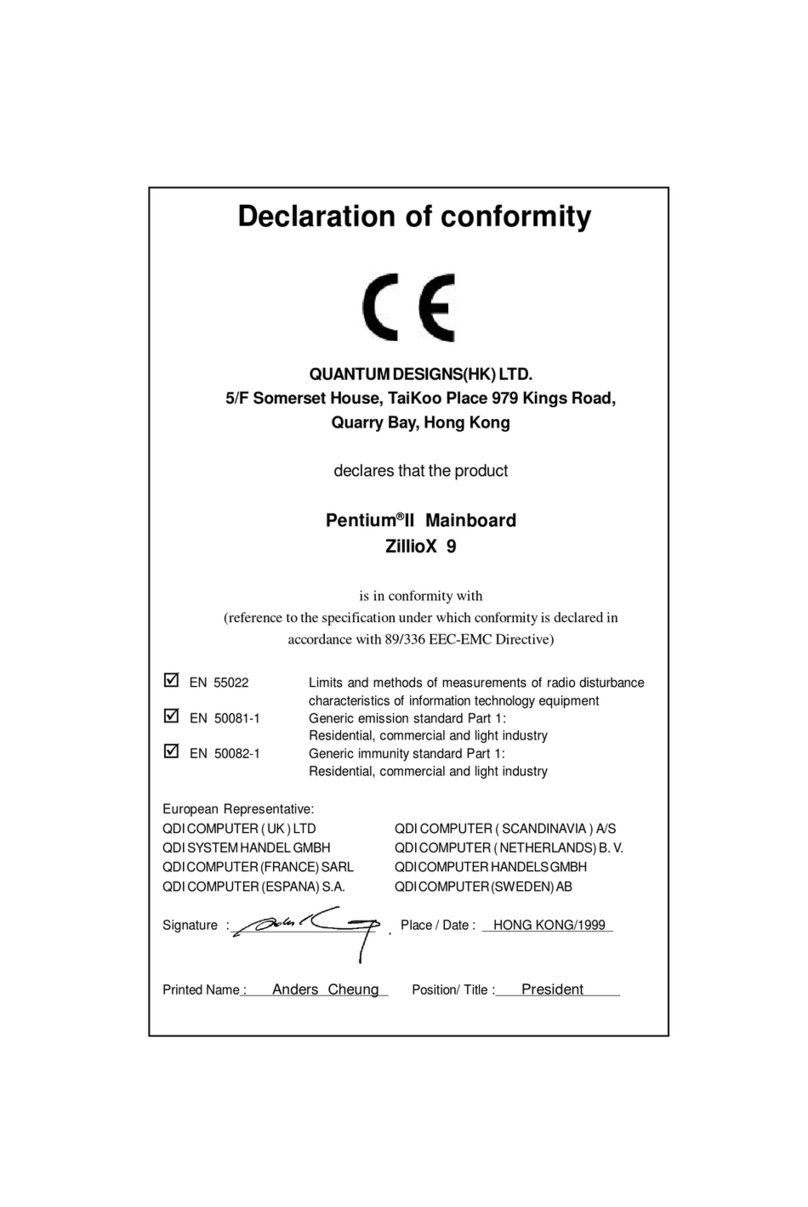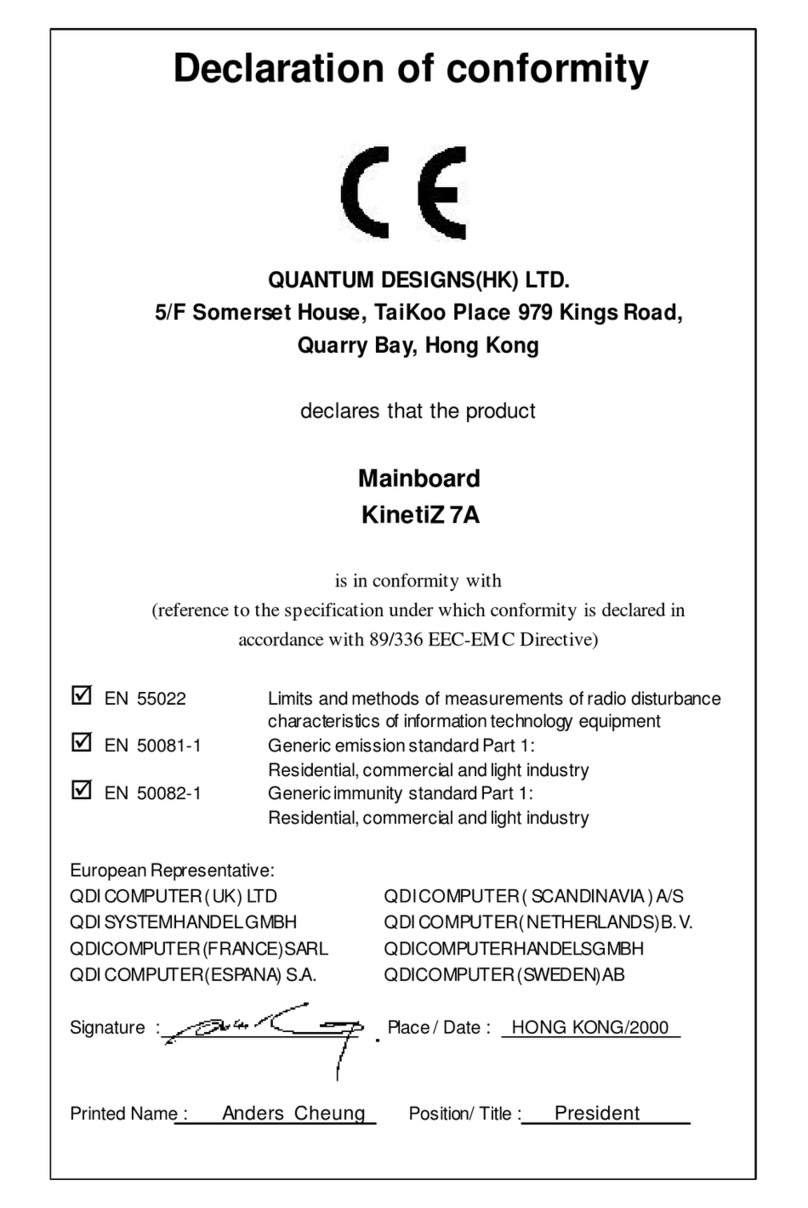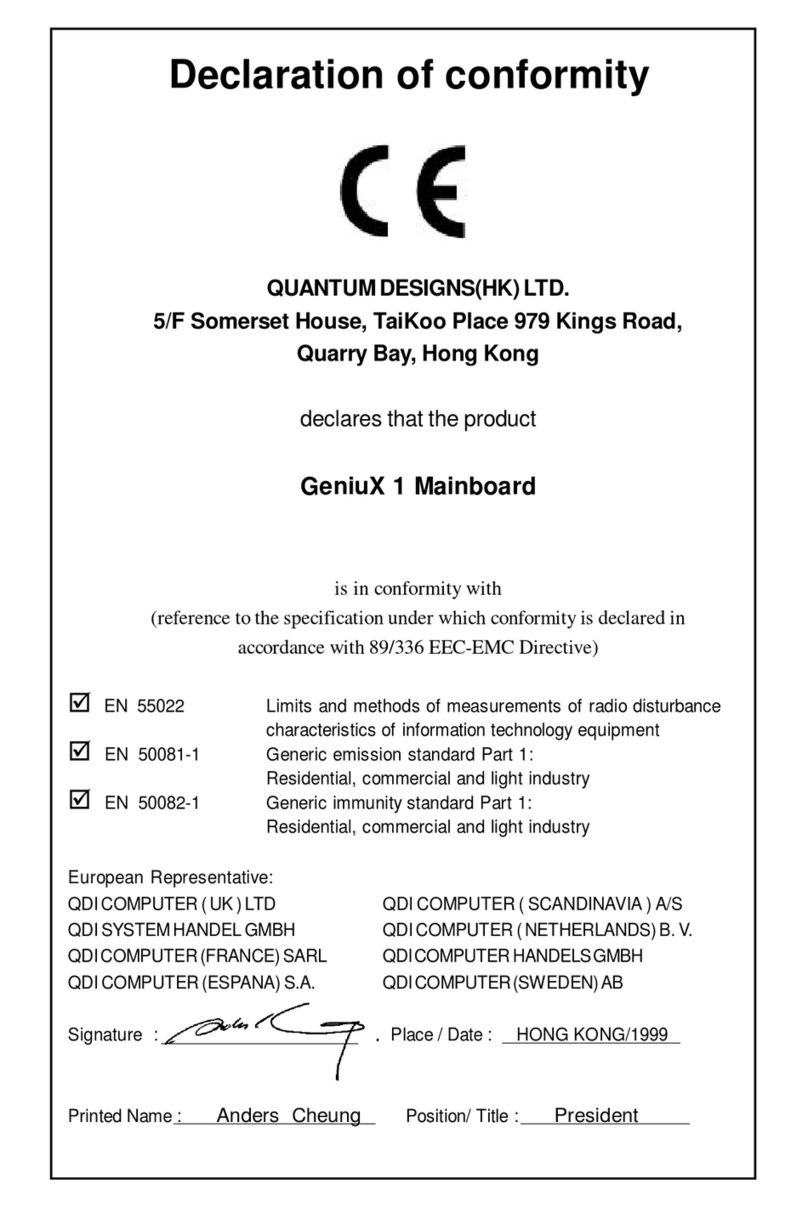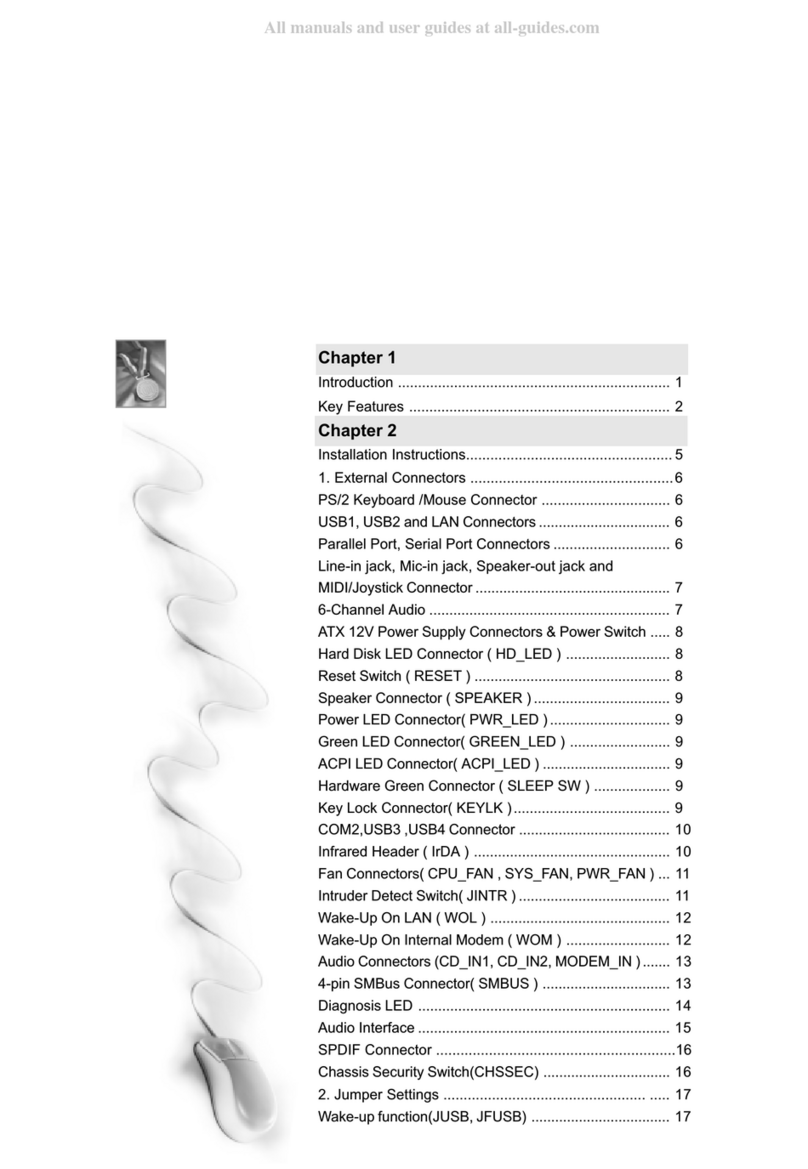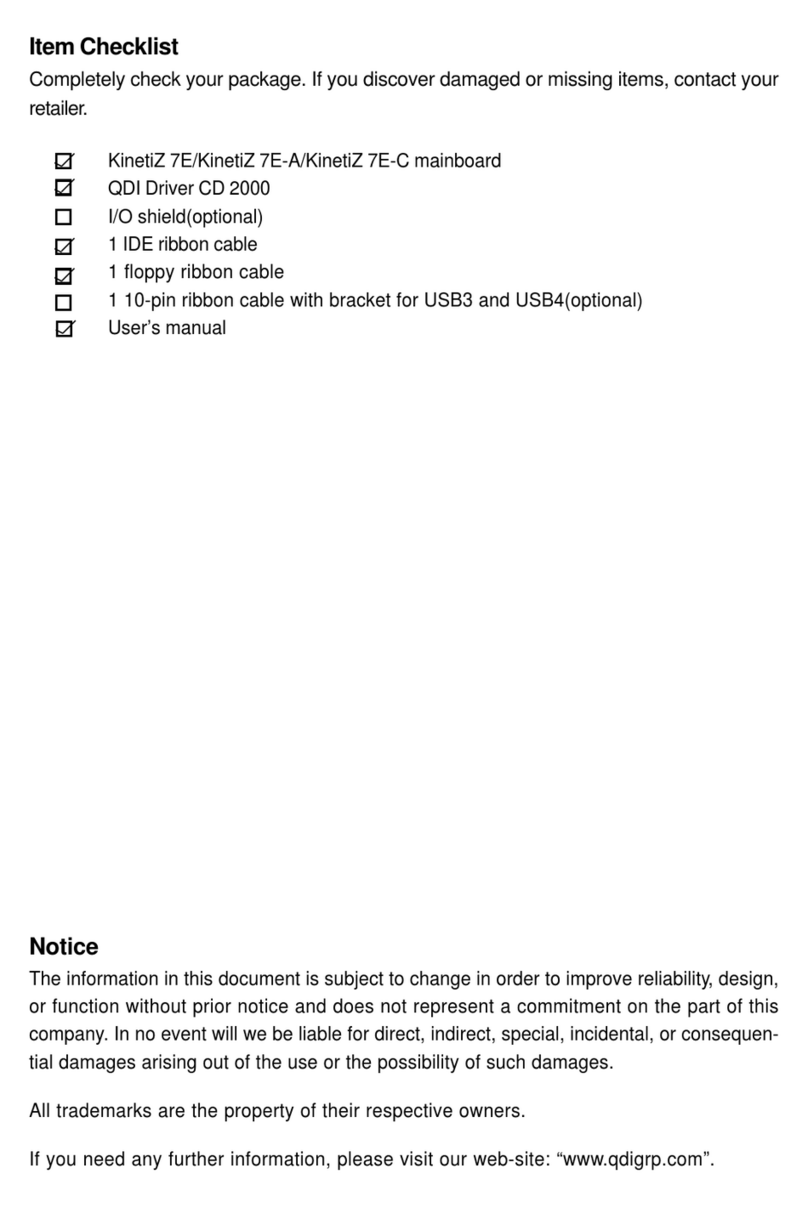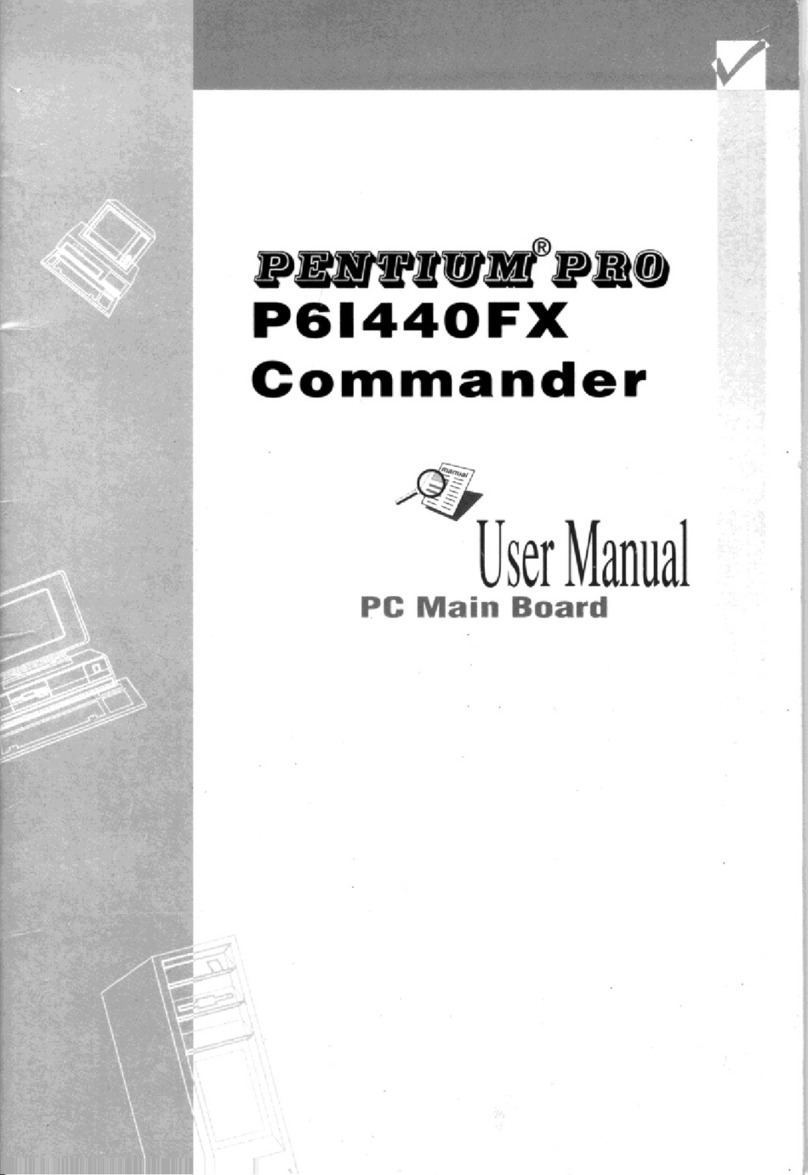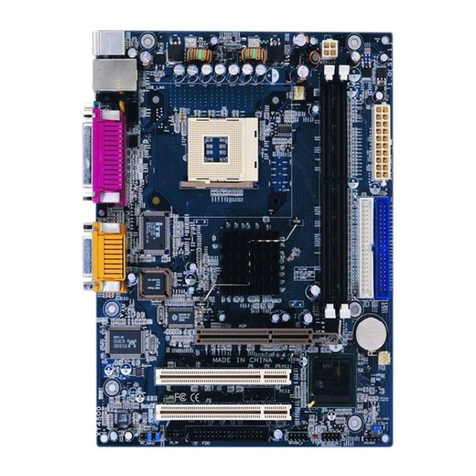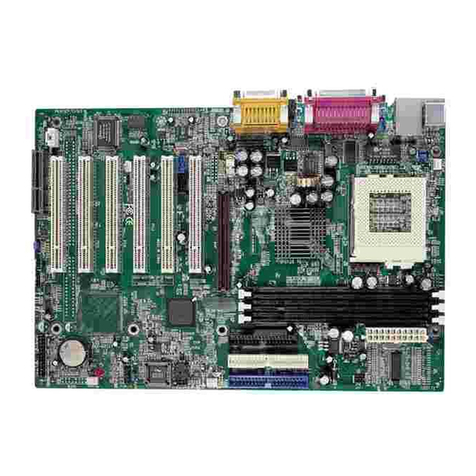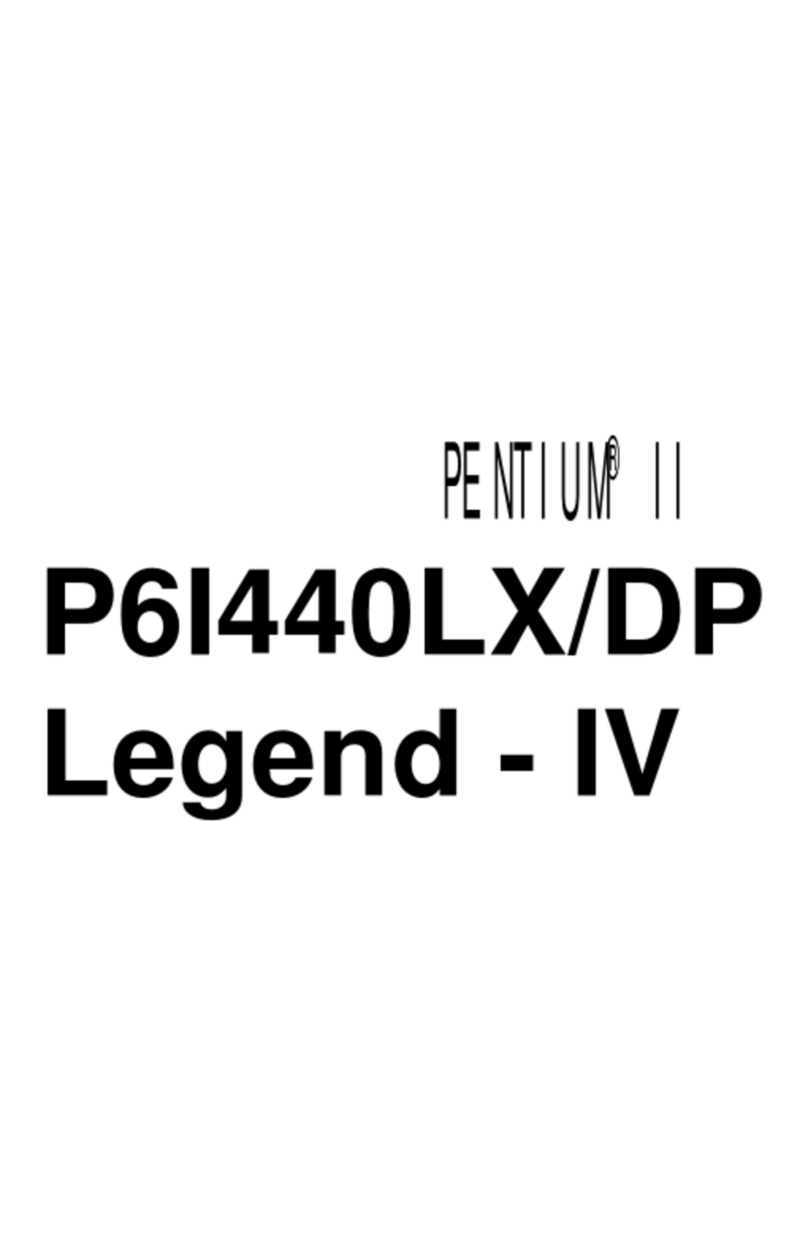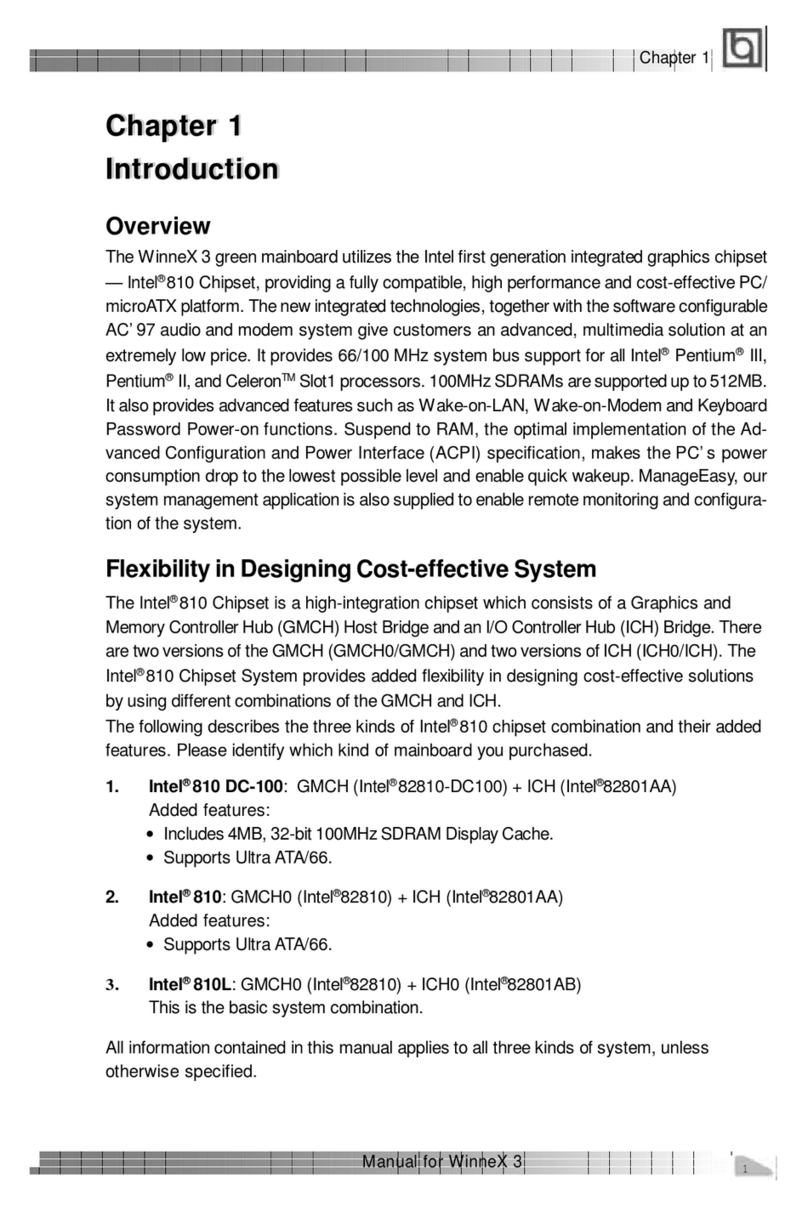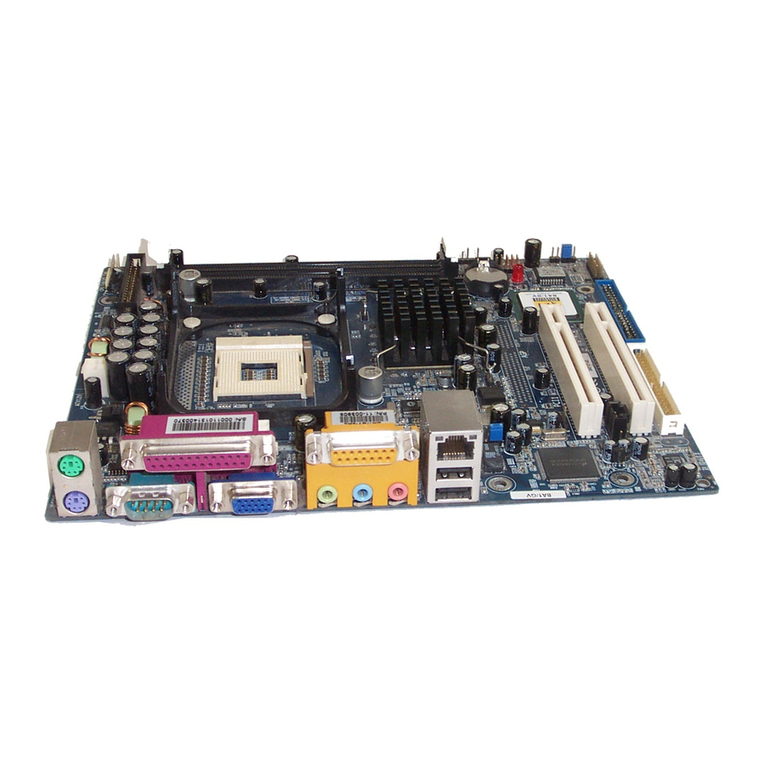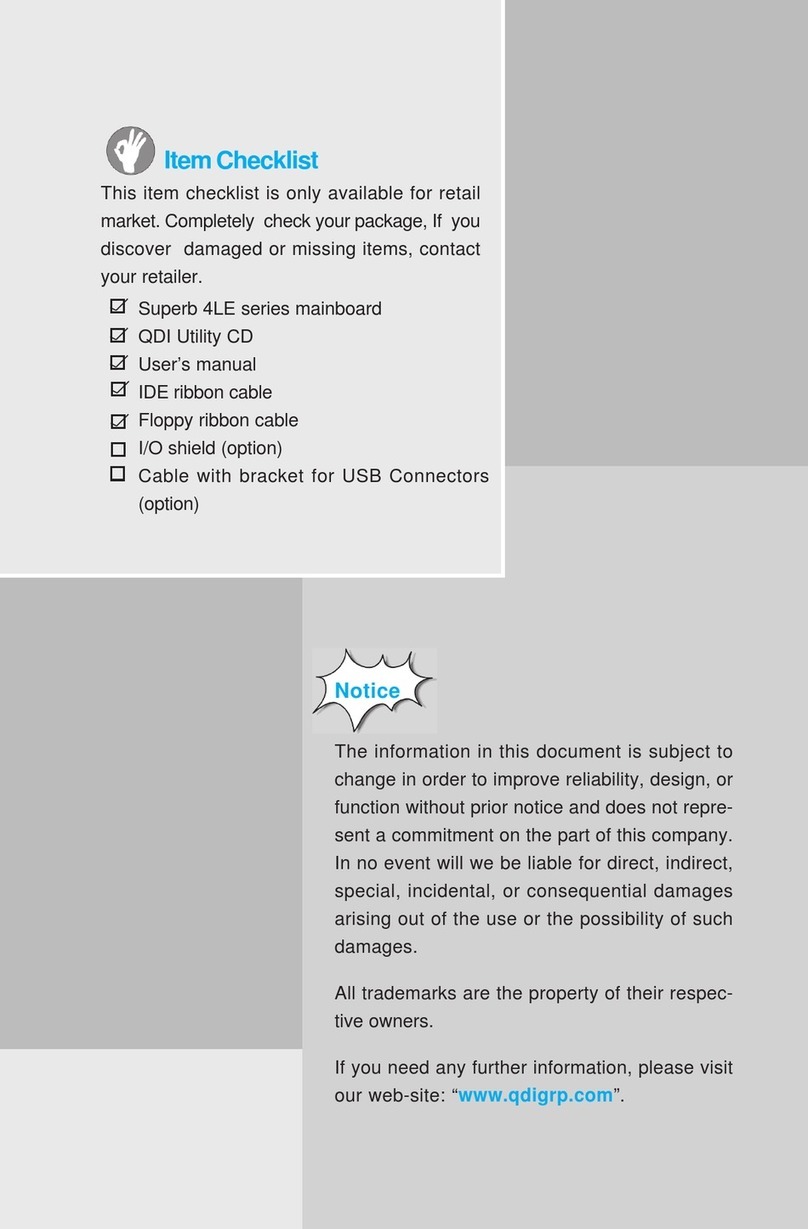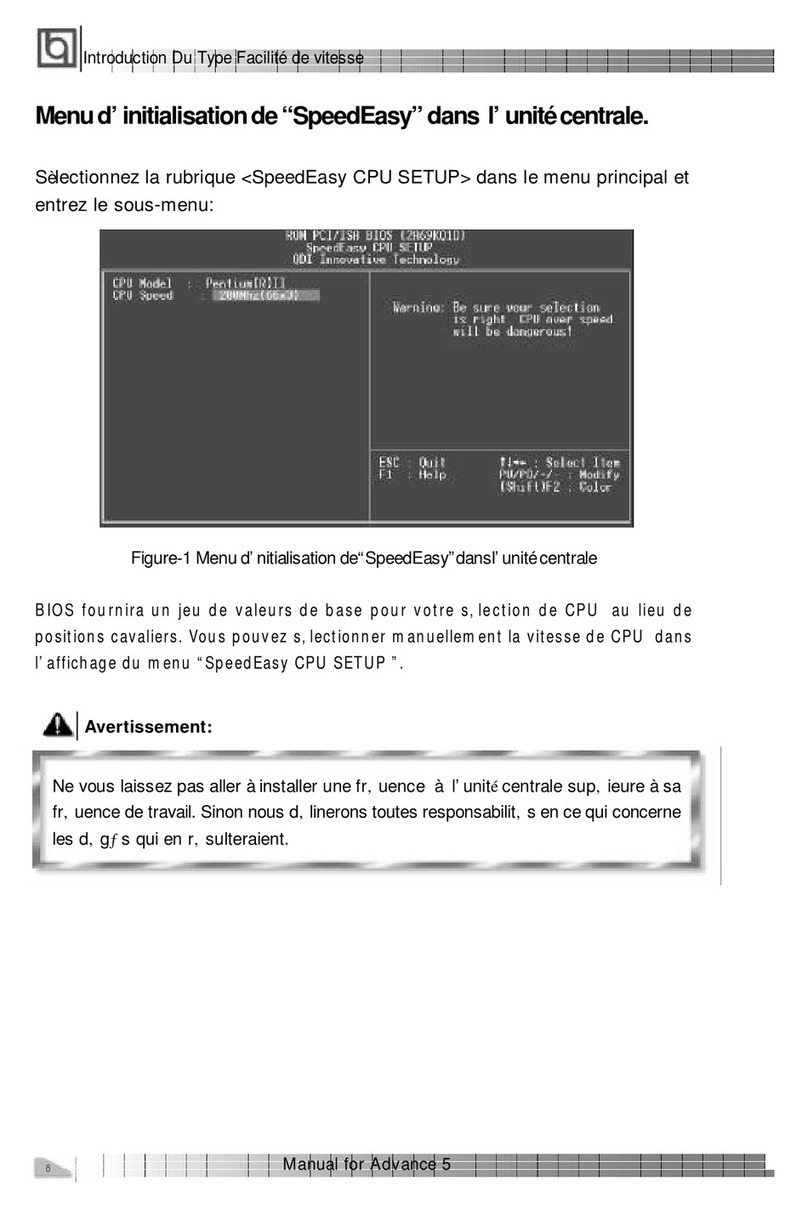
CONTENTS
SpeedEasyQuickSetup(English)...................................................... S.1
SpeedEasy ............................................................... S.3
Facilitédevitesse Initialisation(Francais) .......................................... S.5
1. Introduction................................................................. 1
Overview............................................................................................ 1
KeyFeatures ...................................................................................... 1
Introduction to New Features .............................................................. 3
2. Installation Instructions .............................................. 7
External Connectors ................................................................. 7
PS/2Keyboard&PS/2MouseConnector............................................. 7
USB1&USB2...................................................................................... 7
ParallelPortConnector,SerialPortConnectorand
MonitorOutputConnector .................................................................... 7
Line-injack, Microphone-injack,Speaker-out jack
andMIDI/Joystickconnector ................................................................ 7
USB3,USB4,UART2 ........................................................................... 8
ATX Power Supply Connector & Power Switch ................................... 8
HardDiskLEDConnector(HD_LED) .................................................... 9
ResetSwitch(RESET)......................................................................... 9
SpeakerConnector(SPEAKER)........................................................... 9
PowerLEDConnector(PWRLED) ....................................................... 9
ACPI LEDConnector(ACPILED) ......................................................... 9
GREENLEDConnector(GREENLED) ................................................... 9
HardwareGreenConnector(SLEEP SW) ............................................ 9
Key Lock Connector (KEY LK) ............................................................ 9
InfraredHeader (IrDA)....................................................................... 10
Fan Connector(PWRFAN,CPUFAN,CHSFAN) ................................... 10
Wake-UpOnLAN(WOL) ................................................................... 10
Wake-UpOnInternalModem(WOM) ...................................................11
AudioConnector(CDLIN,MODEM) ......................................................11
SoundConnector(PC-PCI)..................................................................11
4pinSMBusConnector(SMBUS) ....................................................... 12
ChassisSecurity Switch(CHSSEC) .................................................. 12
Audio/ModemRiserInterfaceConnector(AMR) ................................. 12
ExpansionSlots &I/O Portsdescription ............................................. 13
Jumper Settings ........................................................................... 13
ClearCMOS....................................................................................... 14
I


